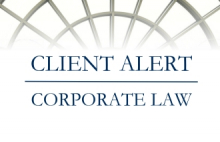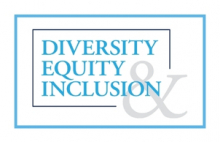Community Bank Regulatory Relief: Exam Cycle and Small Holding Companies
September 2018In August 2018, the federal banking agencies issued two interim rules implementing provisions of the Economic Growth, Regulatory Relief, and Consumer Protection Act of 2018 (EGRRCPA) intended to reduce regulatory burdens on banks, thrifts, and their holding companies. On August 23, the federal banking agencies issued joint interim final rules allowing qualifying insured depository institutions with under $3.0 billion in total assets to benefit from an extended 18-month examination schedule in place of the former 12-month schedule. And on August 28, the Federal Reserve issued an interim final rule expanding the applicability of its small bank holding company policy statement to bank holding companies and savings and loan holding companies with consolidated assets of up to $3.0 billion.
Examination Cycle
The Federal Deposit Insurance Act (FDIA) generally requires a bank’s or thrift’s appropriate federal banking agency to conduct a full-scope, on-site examination of the institution at least once during each 12-month period. The EGRRCPA revised the FDIA to authorize the federal banking agencies to extend the on-site examination cycle to at least once during an 18-month period if the bank or thrift (1) has total assets of less than $3.0 billion; (2) is well-capitalized under the federal prompt corrective action rules; (3) was found at its most recent examination to be well-managed and to have a composite condition of “outstanding” or, in the case of a bank or thrift with total assets of $200.0 million or less, “outstanding” or “good”; (4) is not subject to a formal enforcement proceeding or order from a federal agency; and (5) has not undergone a change in control during the previous 12-month period in which a full-scope, on-site examination otherwise would have been required. The banking agencies also have the authority under the FDIA to extend eligibility for an 18-month examination cycle to qualifying banks or thrifts with an “outstanding” or “good” composite condition and total assets not greater than $3.0 billion, if an agency determines that this amount would be consistent with the principles of safety and soundness.
In the interim final rules, the federal banking agencies implemented the EGRRCPA’s provision to apply an 18-month on-site examination cycle and exercised their authority to extend eligibility for an 18-month examination cycle to qualifying banks or thrifts with an “outstanding” or “good” composite rating with total assets under $3.0 billion, instead of under $200.0 million. In the agencies’ view, extending the examination cycle from 12 months to 18 months for smaller banks or thrifts with relatively simple risk profiles should not appreciably increase their risk of financial deterioration or failure. The new rules were effective immediately upon publication in the Federal Register on August 29, 2018.
Small Bank Holding Companies
The Federal Reserve originally issued its Small Bank Holding Company and Savings and Loan Holding Company Policy Statement (“Policy Statement”) (Regulation Y, Appendix C) in 1980 to facilitate mergers and acquisitions of small banks.
Under the EGRRCPA, the Federal Reserve was obligated to revise the Policy Statement to increase the consolidated assets threshold from $1.0 billion to $3.0 billion. (In 2015, the asset limit had been increased from $500.0 million to $1.0 billion.) The increased threshold was effective upon publication of the Federal Reserve’s interim final rule on August 30, 2018.
According to the Federal Reserve, it originally adopted the Policy Statement to permit the formation and expansion of small bank holding companies with debt levels that are higher than typically permitted for larger bank holding companies, in recognition of the small entities’ often having lesser access to equity financing. In addition to the holding company formation and acquisition transactions, the Policy Statement also applies to transactions involving changes in control, stock redemptions, and other shareholder transactions.
As revised, the Policy Statement applies to bank holding companies and savings and loan holding companies with pro forma consolidated assets below the $3.0 billion threshold, if these companies (i) are not engaged in significant nonbanking activities, either directly or through a nonbank subsidiary; (ii) do not conduct significant off-balance sheet activities, either directly through a nonbank subsidiary; and (iii) do not have a material amount of debt or equity securities outstanding (other than trust preferred securities) that are registered with the Securities and Exchange Commission.
Under the Policy Statement, holding companies that satisfy the qualifying standards may use debt to finance up to 75 percent of the purchase price of an acquisition. However, a qualifying small holding company must satisfy additional requirements on an ongoing basis, including (i) reducing its debt so that all debt is retired within 25 years of the debt being incurred; (ii) reducing the debt-to-equity ratio to 0.30:1 or less within 12 years of the debt being incurred; (iii) ensuring that each subsidiary insured institutions is well-capitalized; and (iv) refraining from paying dividends until such time as it reduces its debt-to-equity ratio is 1:1 or less. The Policy Statement also prohibits a qualifying small holding company from using expedited applications procedures or obtaining a waiver of the stock redemption filing requirements applicable to bank holding companies under the Federal Reserve’s Regulation Y unless the bank holding company has a pro forma debt-to-equity ratio of 1:1 or less.
In addition, the Federal Reserve revised holding company reporting requirements under Forms FR Y-9SP, FR Y-9C, and FR Y-9LP to conform to the Policy Statement’s threshold. Holding companies that qualify under the Policy Statement will not be required to file Form FR Y-9C or Form FR Y-9LP (including regulatory capital information), but would still need to file Form FR Y-9SP.








